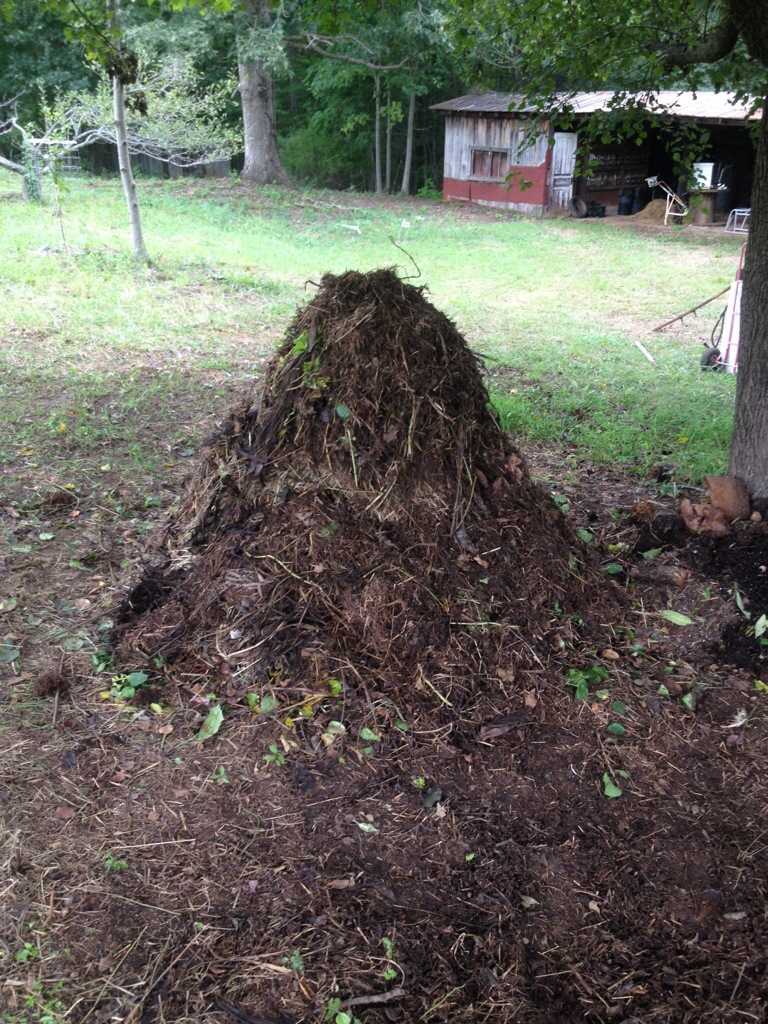One surefire way to improve soil health, life and fertility is with compost. Compost is essentially human created humus, decomposed organic matter teeming with beneficial microbial activity. The recipe for compost involves acquiring enough organic material to start a heap, maintaining a good moisture content, and then turning it to add air to the equation. Compost not only provides nutrients like Nitrogen, Potassium and Phosphate, but it also provides a healthy dose of the bacteria and fungi that help plants utilize and acquire what they need from the soil.
I started a compost pile the other day when I had a surplus of bagged plant material laying around from work,in addition to fresh grass clippings from our wedding preparations.These count as greens in the composting world, or things that are high in nitrogen. Other greens would be animal manures, legume hay, blood meal, and food scraps. The ratio I was shooting for was 1/3 greens to 2/3 browns. Browns are anything high in carbon, like paper, wood, sawdust, straw, or bagged leaves from fall cleanups. The key to good composting is waiting until you have enough material to make a pile that is at least 1 cubic yard in volume. This insulates the pile, helping to maintain the high temperatures needed to break down your organic material while minimizing losses to off gassing.
I layered my browns and greens, and added water after each layer. I wanted to have the pile wet, but not dripping or soaked. Roughly around the moisture content of a sponge you just squeezed the water out of. This aids the microbial breakdown, while keeping the pile from getting too anaerobic. After I had a pile that was up to my shoulders, I let it sit for 4 days. After 4 days,it was time for the first turn, and I grabbed my pitch fork and fluffed layers from the pile to an open space right next to it, adding water if it seemed too dry. It was nice and steamy, which let me know that the process was working!
Today, 3 days later, I turned it once more and added some leftover stale beer to feed the microbes a little more. From this point on I’ll turn it every 2 days, and after 2-3 weeks, we should have roughly a cubic yard of black gold,ready for the garden or for a wonderfully complex brew of compost tea!
